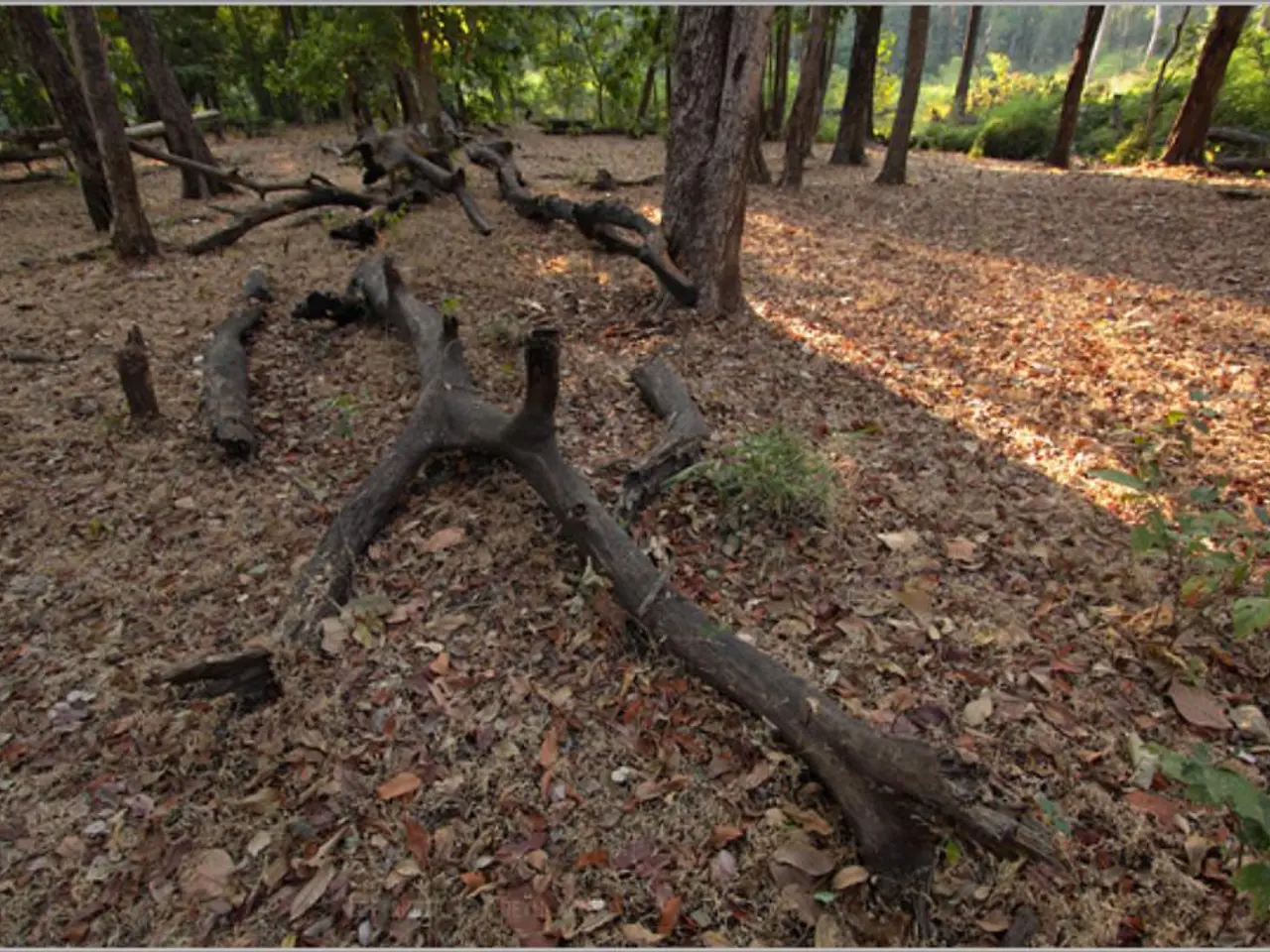Preparing Bonsai Branches for Rooting Outside the Tree: Removing Bark & Using Growth Hormones
Air layering, a popular horticultural technique, can be effectively applied to bonsai branches for propagation. This method encourages root growth on a selected branch while maintaining the health of the parent plant.
Branch Selection
Choosing the right branch is crucial. A healthy, semi-hardwood branch of moderate thickness works best. This branch, with its stored nutrients, is ideal for supporting root formation.
Girdling Techniques
Proper girdling techniques are essential. Make two circular cuts around the branch, about 1 to 1.5 inches apart, through the bark down to the white inner cambium layer. Carefully strip the bark between these cuts, removing the outer green cambium to prevent healing over the wound. A shallow longitudinal incision should also be made and held open with a toothpick or small object to expose more area for root initiation.
Rooting Hormone Application
After girdling, apply rooting hormone powder or gel to the exposed wounded area. This stimulates and accelerates root development.
Humidity Control
Maintaining a humid microclimate around the girdled area is crucial. Encase the wounded section with moisture-retaining material such as sphagnum moss or a damp cloth to maintain high humidity. Then wrap this with plastic film tightly secured to prevent moisture loss but also avoid excessive water ingress.
When sufficient roots develop (which may take from a few weeks to several months depending on species and branch vigor), the new rooted branch is cut below the rooted zone and potted carefully. It is essential to avoid exposure to intense sun or drying winds until well established.
Synthetic Hormone Products
Synthetic hormone products, typically containing either indole-3-butyric acid (IBA) or naphthaleneacetic acid (NAA), can substantially enhance the chances of successful root development. Monitoring the air layer's moisture levels will also help identify any signs of root development.
Temperature and Humidity Conditions
Ideal humidity and temperature conditions are crucial for promoting healthy root development. A controlled environment with relative humidity between 70-80% and temperatures ranging from 65-75°F (18-24°C) fosters prime root growth. Excessive moisture or temperature fluctuations can hinder the air layering process.
Natural Hormone Sources
Bonsai enthusiasts seeking a more organic approach can turn to natural hormone sources, such as willow extract, honey, and certain plant species. Honey contains a lower concentration of auxin-like substances, making it a better option for more delicate plants. Willow extract, with its high concentration of auxin, can stimulate aggressive root growth.
Precautions
Girdling, when done properly, does not substantially harm the parent tree's health, as the tree can still transport nutrients and water through its remaining tissues. However, it is essential to choose a product with the appropriate concentration of auxin, as excessive amounts can be detrimental to root growth.
Timing and Patience
Successful air layering hinges on a deep understanding of the timing and patience required to coax roots from a mature branch. Premature separation can be disastrous for the new bonsai.
Special Considerations
When considering air layering on newly planted bonsai trees, it is crucial to prioritize the tree's establishment and stability before attempting this technique. Air layering is challenging during winter dormancy, but careful monitoring of moisture and temperature is vital to stimulate root growth.
In brief:
| Practice | Details | |--------------------|-------------------------------------------------------------------------------------------------| | Branch Selection | Healthy, semi-hardwood, moderate thickness branch | | Girdling Technique | Two cuts 1–1.5 inches apart, strip bark to white cambium, shallow incision held open | | Hormone Application| Apply rooting hormone to wounded area | | Humidity Control | Wrap wound in moist sphagnum moss, cover with plastic to retain moisture |
This approach is consistent with general air layering horticultural techniques and can be adapted specifically for bonsai branches for successful propagation.
The selected branch, ideal for air layering, should be healthy and semi-hardwood, with a moderate thickness that can support root formation.
Properly girdling the chosen branch involves making two circular cuts, stripping the bark, and making a shallow incision to expose more area for root initiation, similar to home-and-garden gardening techniques.




